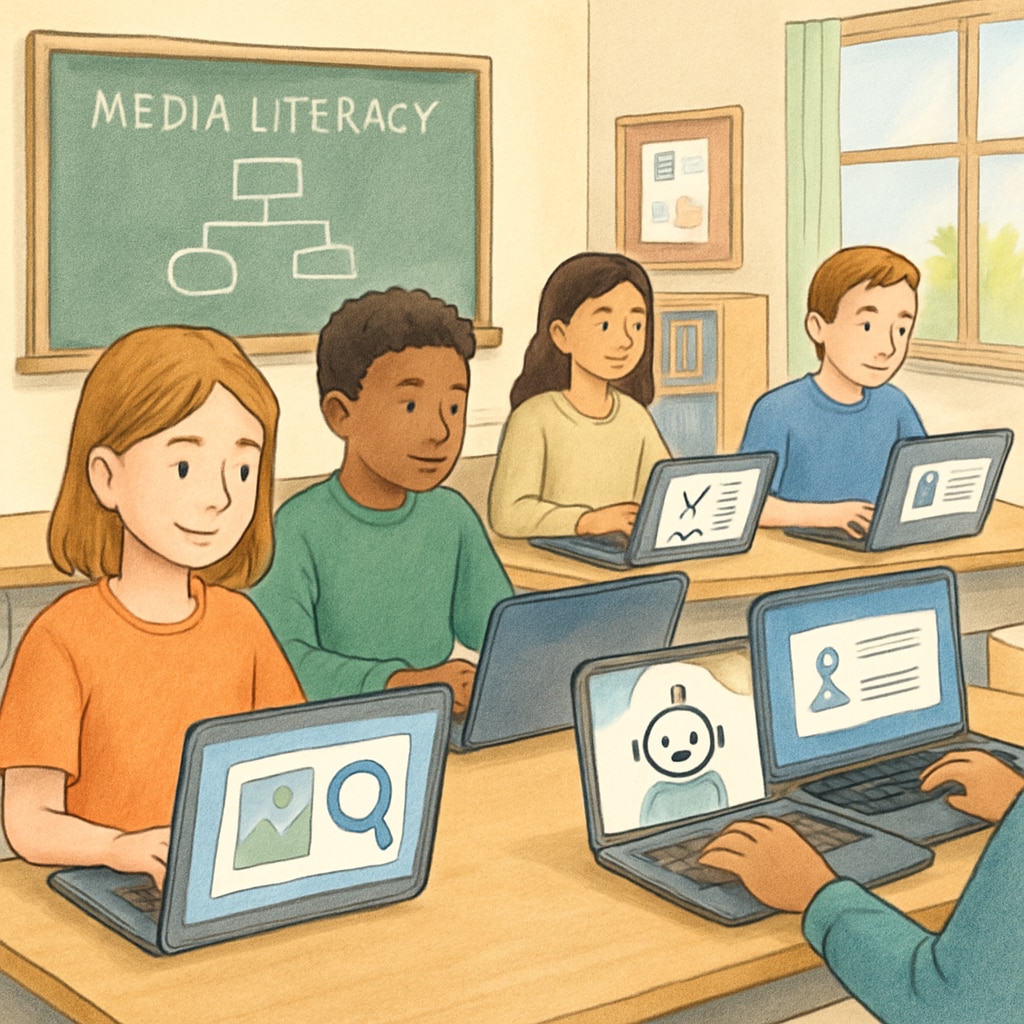In the digital age, fostering media literacy and critical thinking has become a cornerstone of modern education. With the rise of AI technologies, educators now have access to innovative tools that can help students better understand, analyze, and create media content. One such tool, AI writing prompts, offers a dynamic way to engage students in critical thinking exercises while enhancing their media literacy skills. This article explores how these resources can be used to empower high school students and provides insights into a free, role-based AI writing prompt package designed for educators.
Why Media Literacy and Critical Thinking Matter in the Digital Era
Today’s students are constantly exposed to a vast array of digital content, from social media posts to news articles. The ability to critically assess this information is crucial for distinguishing between credible sources and misinformation. According to a Wikipedia article on media literacy, media literacy involves the skills needed to access, analyze, evaluate, and create media in various forms. Critical thinking, on the other hand, supports the cognitive processes required to question assumptions, analyze evidence, and draw logical conclusions.
By equipping students with these skills, educators can prepare them for responsible digital citizenship and lifelong learning. However, teaching these concepts in a way that resonates with high school students (grades 9–12) requires creativity and adaptability. This is where AI tools, particularly AI writing prompts, come into play.

How AI Writing Prompts Transform Classroom Learning
AI writing prompts are automated suggestions generated by artificial intelligence to inspire and guide student writing. These prompts can be tailored to simulate real-world scenarios, encouraging students to adopt different perspectives and think critically about complex issues. For example, a role-based AI writing prompt might ask students to write a news article from the perspective of an environmental journalist or to draft a persuasive speech promoting digital privacy rights.
Here are some ways AI writing prompts enhance learning:
- Engagement: By offering interactive and dynamic writing tasks, AI prompts keep students motivated and involved.
- Real-World Application: Role-based prompts help students connect classroom lessons to real-world challenges.
- Personalized Feedback: Many AI tools provide instant feedback on grammar, tone, and structure, allowing students to refine their skills independently.
Incorporating AI writing prompts into the curriculum not only makes learning more engaging but also helps students develop transferable skills that are valuable in higher education and future careers.
Introducing the Free Role-Based AI Writing Prompt Package
To support educators, a free teaching resource has been developed, featuring a set of role-based AI writing prompts tailored for high school students. This package includes prompts designed to simulate real-world roles, such as journalists, policy analysts, and marketing professionals. Each prompt encourages students to think critically, evaluate media content, and develop persuasive arguments.
For example, one prompt might ask students to analyze a controversial news article and write a rebuttal from the perspective of a fact-checker. Another might challenge them to create a social media campaign advocating for a local environmental issue. These activities not only build media literacy but also promote empathy and creativity.
Educators can integrate these prompts into their lesson plans in various ways:
- As part of a debate or discussion activity.
- For individual or group writing assignments.
- As a homework task to encourage independent research.
These prompts are particularly effective for students in grades 9–12, as they align with cognitive development stages that emphasize abstract reasoning and critical analysis.

Benefits for Educators and Students
AI tools provide significant benefits for both educators and students. For teachers, AI writing prompts simplify lesson planning and offer a flexible resource that can be adapted to various subjects, including English, social studies, and media studies. For students, these prompts offer an opportunity to explore diverse perspectives, hone their writing skills, and deepen their understanding of media’s role in society.
Moreover, these tools enable students to engage with content in a way that feels relevant and meaningful. By simulating real-world roles, students can better appreciate the complexities of issues such as misinformation, digital ethics, and media bias.
As a result, educators can help students develop into informed, critical thinkers who are prepared to navigate the challenges of the digital age.
Conclusion: Unlocking New Possibilities with AI
The integration of AI writing prompts into high school education represents a powerful opportunity to enhance media literacy and critical thinking. By leveraging these tools, educators can create a more engaging and effective learning environment that equips students for success in the digital age. To get started, consider exploring the free role-based AI writing prompt package and incorporating it into your teaching strategy.
In an era defined by rapid technological advancement, AI offers a unique chance to reimagine education and empower the next generation of critical thinkers.
Readability guidance: Short paragraphs and lists are used to summarize key points. Transition words such as “however,” “in addition,” and “for example” ensure smooth flow. Passive voice is minimized, and sentence length is kept concise for better comprehension.


